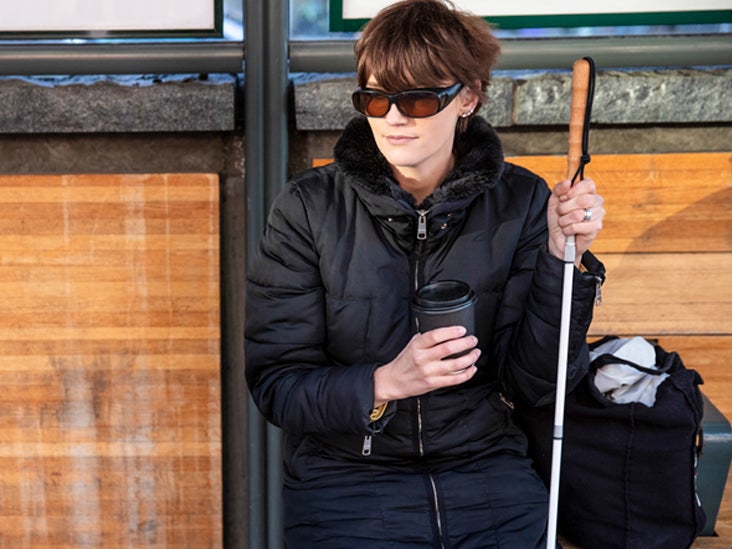
By age 90, 40% of people have an attentional field of less than 10 degrees left and right. This is known as a decrease in attentional field, and it may be present with or without other types of visual impairment. Research by Brabyn, Haegerström-Portnoy, Schneck, and Lott (Brabyn et al., 2000), demonstrated that over age 60-65 the prevalence of problems detecting objects in the peripheral visual field increases dramatically. Glaucoma and retinitis pigmentosa are the main causes of peripheral field loss. In addition, depth perception is often impaired. Individuals with peripheral field loss, sometimes referred to as tunnel vision, may see details directly in front of them clearly, but have difficulty with objects and signs off to the side. The same street crossing as might be seen by a person with peripheral field loss The general category of restricted fields can be further divided into central field loss and peripheral field loss. Lighting and contrast affect functional vision and are not reflected in the clinical measurements. Reduced acuity can refer to a large range of functional vision from vision tested as 20/20 to totally blind. Total blindness or light perception only.Combination of reduced acuity and restricted fields.Restricted fields (central or peripheral).A person with a visual field of 20 degrees or less is able to see no more than a 20-degree field without scanning. A simplified example of visual acuity is that a person who is legally blind with 20/200 vision sees at approximately 20 feet what a person with 20/20 vision sees at 200 feet.


Vision correctable to 20/20 with at least 180-degree field is considered 'normal vision'. Legal blindness refers to central visual acuity of 20/200 or less in the better eye with the best possible correction, as measured on a Snellen vision chart, or a visual field of 20 degrees or less. Legal blindness: a level of visual impairment that has been defined by law to determine eligibility for benefits. those with "severe limitation" ("unable to see words and letters")."non-severe limitation" ("difficulty seeing words and letters") and.Visual impairment: a functional limitation in seeing, including both those with:


 0 kommentar(er)
0 kommentar(er)
